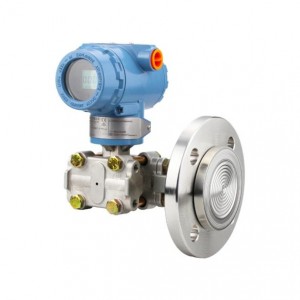High temperature pressure sensor
What is a high temperature pressure sensor?
A high-temperature pressure sensor is a piezoelectric sensor that is capable of measuring pressures at a constant temperature of up to 700°C (1.300°F). Working as a spring-mass system, typical applications include processes where dynamic pressure pulsations have to be measured and controlled. Thanks to the in-built PiezoStar crystal, a high-temperature pressure sensor withstands temperatures of up to 1000°C (1830°F) in the short term. Through differential technology and in-built acceleration compensation, low noise and high accuracy are achieved. An especially isolated hardline cable designed for very high temperatures connects the sensor with the charge amplifier.
What are high-temperature pressure sensors used for?
High-temperature pressure sensors are applied for measurement and control of dynamic combustion processes, for example in gas turbines and similar thermoacoustic applications. They accurately capture potentially dangerous pressure pulsations and vibrations in order to optimize system operation.
How is the measuring chain for high-temperature pressure sensors built up?
Apart from the sensors themselves, differential charge amplifiers and low-noise hardline and softline cables ensure that a high measurement quality is achieved. Additionally, Ex-certified components are used for application in harsh environments.
What types of high-temperature pressure sensors do exist?
High-temperature pressure sensors are available in a vast variety of versions, among them small and lightweight variants for research and development purposes. Depending on the requirements of a specific application, individual cable lengths and connector types are possible. Furthermore, certified variants (ATEX, IECEx) are applied in hazardous environments.

High temperature pressure sensors are dedicated for use in high temperature applications. As we may all know that ordinary pressure sensors can't work in high temperature environment for a long time if no protective measures are taken.
To provide solutions for high temperature application, high temperature pressure sensors are developed without extra measures taken. This kind of sensor can work in temperature up to 200℃. Its unique heat sink design reduces the heat to great extent, which well protects the sensor especially the core against sudden thermal attack of the high medium.
But if ordinary pressure sensors are used in such application rather than high temperature pressure sensors, then protective measures should be taken to avoid damage to the circuit, parts, sealing ring and core. Below are three methods.
1. If the temperature of the measuring medium is between 70 and 80℃, add a radiator to the pressure sensor and the connection point to lower down the temperature appropriately before the medium's direct contact with the instrument.
2. If the temperature of the measured medium ranges 100°C~200°C, install a condenser ring at the pressure connection point and then add a radiator, so that heat can be cooled down by the two before direct contact with the pressure sensor.
3.To measure extremely high temperature, a pressure guiding tube can be extended and then connected to the pressure sensor, or both a capillary tube and a radiator can be installed to achieve medium cooling.
Post time: Dec-07-2021
